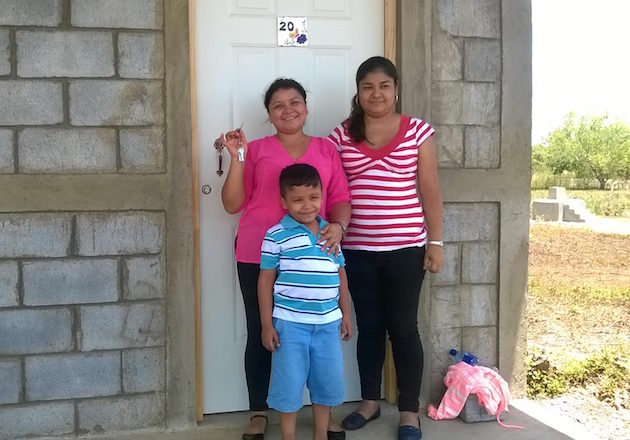Ministries that approach their work in a holistic way find that it fosters dignity and a deep willingness for people to step up to the challenge. A holistic approach to community development assumes a set of “catalytic” areas which help create the conditions and opportunities for humans to flourish. In other words, it’s never just one thing that people need but rather a set of four or five different but complimentary components working together.
John Quinn, co-founder of The Sinapi Foundation described just such a set in his 2014 SATtalks entitled “Partnering for Sustainable Solutions.” They have found it takes a healthy living environment, medical and dental services, economic development, education and shelter in an integrated approach in order to help people create sustainable transformation.
What they have found, like so many others, is that there is no such thing as “the one most important thing” that somehow becomes the catalyst for change through a trickle-down effect. Instead, it’s always “the four or five NECESSARY things.” One of the most important steps we can take to move our church missions and desire to help beyond helping that hurts is to genuinely understand and wholeheartedly embrace the holistic approach.
Focusing on Four Critical Areas
 The first time I spoke with Keith Jaspers on the phone I knew I was talking with someone who “got it.” It’s clear he understands that helping people help themselves is much more than simply meeting needs or focusing on a single issue as if it were the key to changing everything. The Rainbow Network, which he founded to work among the poorest of the poor in rural Nicaragua, is a model that is helping families create sustainable transformation.
The first time I spoke with Keith Jaspers on the phone I knew I was talking with someone who “got it.” It’s clear he understands that helping people help themselves is much more than simply meeting needs or focusing on a single issue as if it were the key to changing everything. The Rainbow Network, which he founded to work among the poorest of the poor in rural Nicaragua, is a model that is helping families create sustainable transformation.
Their model focuses on four critical areas: home ownership, micro-finance, education and access to health care.
Think about it. What good is it if a person can educate their children but never help them obtain a job or a way to start a business? You might provide a person with a home but without a job, without an education and without adequate health care you simply allow them to languish in a better home. To break the cycle of poverty we need all four.
“Networking” Those Necessary Areas
Twenty years ago while working with former president Jimmy Carter on the Habitat for Humanity International board of directors he saw firsthand the difference homeownership could make in helping a family break out of poverty. But he also saw that housing and homeownership, as important as it is, was not enough. As a matter of fact, the more he thought the more he realized there were a number of necessary things that people trying to break out of poverty needed.
So why couldn’t a ministry be started that “networked” all of these necessary areas into a single, holistic approach? It’s this holistic approach that makes the Rainbow Network truly different than most faith-based models I run across.
In a nutshell it works something like this; the Rainbow Network builds homes for families and then, instead of giving them the homes, they sell the homes on a 25 year, no-interest note. It fosters a sense of dignity and people step up to the challenge. By working with a number of communities they are able to provide a traveling medical team to drastically improve the health outcomes in each community and through Church partnerships provide scholarships to help educate the children in the community.
What you have in the end are people starting new business, living in homes they own through purchase not gifting with the means to educate their children and care for the medical needs of their family. A lot of ministries will focus on one or two of these areas leaving communities to live without the others or find them on their own. What you can see is that a community that has access to all four of these areas is in a much better place to help its people break the cycle of poverty.
Skin in the Game to Foster Dignity
Built deep into the DNA of their model is the idea that both the community and individuals need to have “skin in the game.” At the community level it means they partner “with” the community instead of simply doing things “to” them or “for” them.
Their approach begins in a conversation with the people of a community that evolves over time into a commitment of what it would look like to work together on the four catalytic areas described above. Committees are formed, expectations are clarified, projects are established and leaders within the community take on roles and responsibilities for the work.
On any given day there are approximately 1,500 people across the Rainbow Network involved in community-based projects with almost 1,000 families making house payments and another 3,000 loan payments being made every month. Those loan payments on the homes and the interest from the micro-loans provides two income streams back to the ministry to help expand the work and, in part, pay for medical and educational services in the community.
Building A Transformational Model at the Individual and Community Level
Their model is clearly transformational at the individual and community level and making significant advances on the idea of sustainability.
It’s also worth noting that within Nicaragua the Rainbow Network is totally indigenously-led. All the roles and responsibilities from top to bottom are held by Nicaraguans. The message is clear that this is a ministry by Nicaraguans for Nicaraguans. It affirms that God has placed capable leaders in every context and models a type of partnership that moves beyond the paternalism that has defined so much of our efforts to help the poor.
As a model, the Rainbow Network is worth understanding and even replicating by others wanting to move toward sustainability and transformation. As a ministry it’s a partner any church could work with to provide meaningful and positive volunteer experiences and rest assured that your efforts were making a lasting difference.
You will be able to hear Keith Jaspers along with other presenters at this year’s SATtalks, October 6-7, 2016 in Kansas City. See here for full details.
Tom Bassford

Leave A Comment
You must be logged in to post a comment.